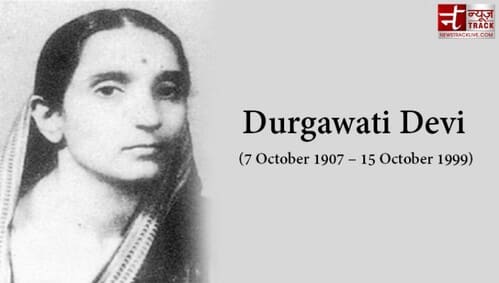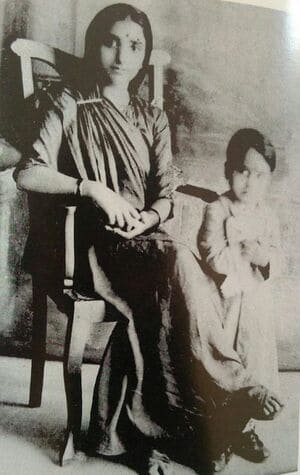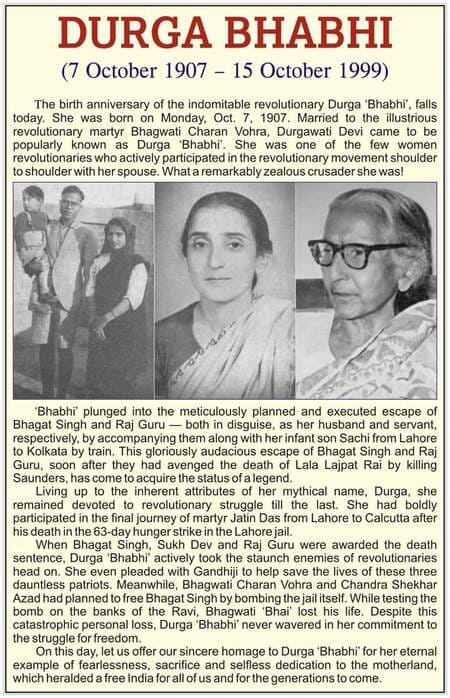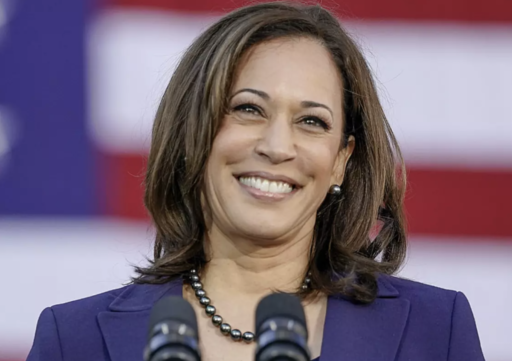Durga Devi: Story Of The Unsung Freedom Fighter Of India

the fascinating and inspiring story of Durga Devi, one of India's bravest freedom fighters.
Durga Devi, a forgotten revolutionary compatriot of Bhagat Singh and Chandrashekar Azad, lived a life of intrigue and danger to help India gain freedom from colonial rule.
After 200 years India got independence from the British colonial rule on 15th August 1947 only because of the courageous freedom fighters who sacrificed their lives for our nation. While some of these personages found their place in history, others got lost in time. One such woman is Durga Devi Vohra, a woman who lived a life of intrigue and danger to help our nation to fight and stand against British colonial rule.
This untold, unsung revolutionary appeared like a storm on the anti-colonial nationalist sky and wielded tremendous influence on men including Bhagat Singh, Rajguru and Chandrashekhar Azad. Durga Devi was the only child of a Gujarati couple who was settled in Allahabad, after her mother passed away, her father took vows of sannyasa (renunciation) and she was brought up by her aunt.

After many years of her marriage to Bhagwati Charan, she began to work as a teacher at a girl’s college in Lahore. In the meantime, she also joined the Hindustan Socialist Republican Association (HSRA), an organisation whose aim was to set India free from the shackles of British rule. By the late 1920s, the members of HSRA had ramped up their revolutionary activity. Durga Devi was also a planner and an integral part of the machinations of the HSRA. After 3 years, she gave birth to a son, and sometimes later, she was forced to go underground so that she could save her son’s life as colonial authorities launched a brutally repressive drive against HSRA members.
Meanwhile, Bhagwati Charan had rented a room in Lahore to manufacture bombs, both of them were well aware that their radical political activities had brought them to the attention of the police. However, this incident failed to affect their pure intentions toward the nation and they continued with their revolutionary activity. During this time, Bhagat Singh, Sukhdev and Rajguru assassinated Assistant Superintendent of Police John Saunders — the British police officer responsible for the brutal lathi charge that had led to the death of Lala Lajpat Rai. Ultimately this resulted in police raids to search the trio. This is when the trio came to their Durga Devi for help and shelter.
Without thinking twice, she agreed to help and handed over the sum of money her husband had left with her for emergencies. Moreover, she also agreed to act as Bhagat Singh’s wife to help him escape the British intelligence in Lahore. Durga Devi’s exceptional decision proves her to be courageous because despite knowing the fact that the social conventions of the time strictly constrained contact between men and women who were not married, she chose to help the revolutionaries.

After escaping from Lahore, Durga Devi along with her son and Bhagat Singh came to Calcutta where Durga Devi, her husband and Bhagat Singh began to attend the Calcutta session of INC and met several Bengali revolutionaries.
However, things got hard for Durga Devi after the tragic death of her husband while experimenting with a bomb. Heartbroken Durga Devi dealt with the grief by plunging into revolutionary work. In July 1929, she led a procession in Lahore, holding a placard with Bhagat Singh’s photograph and demanding his release. A few weeks later, she led the funeral procession of Jatindra Nath Das from Lahore to Calcutta after his death in the 63-day jail hunger strike.

The same year, on October 8, she shot at a British policeman and his wife standing on the Lamington Road in South Bombay, in an incident that would later be described as “the first instance in which a woman figured prominently in a terrorist outrage”. Because of this action, she was arrested and sentenced to three years imprisonment.
Yet all this is not Durga Devi’s only contribution to her country. In 1939, she visited Madras to receive training from Maria Montessori (the pioneering educator from Italy). A year later, she opened her school in Lucknow — the first Montessori School in north India — with five students from underprivileged families.
After the Independence, Durga Devi lived a quiet life of anonymity in Lucknow before breathing her last on October 15, 1999, at the age of 92. Surprisingly most fans of the blockbuster movie Rang De Basanti don’t know that the role played by Soha Ali Khan was based on Durga Devi!
- Shyma Mansur







